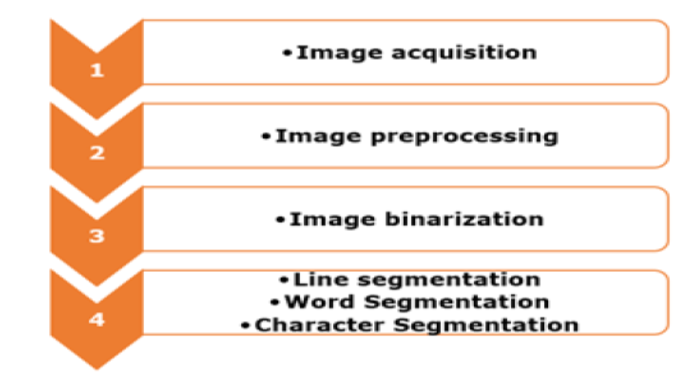


Indian Journal of Science and Technology
Year: 2021, Volume: 14, Issue: 7, Pages: 618-627
Original Article
Bhargav Rajyagor1*, Rajnish Rakholia2
1Gujarat Technological University, Gujarat, India
2S. S. Agrawal Institute of Management and Technology, Navsari, Gujarat, India
*Corresponding Author
Email: [email protected]
Received Date:20 November 2020, Accepted Date:27 February 2021, Published Date:03 March 2021
Objectives: To improve the efficiency of tri-level segmentation tasks for handwritten Gujarati text. Methods: Using hybrid methods for tri-level segmentation, we have used line, word and character segmentation from the image. This study presents a segmentation paradigm that works with touching characters, slop of the line written on the page, character overlapping, etc. It evaluated on the dataset of 500+ images created by us on different writing sentences by different people. We have used the Horizontal projection technique for line segmentation, Scale-space technique for word segmentation and the Vertical projection technique for character segmentation. Findings: The experimental results show that the proposed method is more efficient for handwritten Gujarati text with diacritics. We have obtained the accuracy for character level segmentation is 82%, word-level is 90% and for the line-level segmentation is 87%. Novelty: We have designed a methodology to segment Gujarati handwritten text with diacritics at all three levels including characters, words and lines. Applications: We have proposed tri-level segmentation which is pre-processing task that can be used in any character recognition systems i.e. OCR.
Keywords: Deep learning; trilevel segmentation; handwritten Gujarati text
© 2021 Rajyagor & Rakholia.This is an open access article distributed under the terms of the Creative Commons Attribution License, which permits unrestricted use, distribution, and reproduction in any medium, provided the original author and source are credited. Published By Indian Society for Education and Environment (iSee)
Subscribe now for latest articles and news.